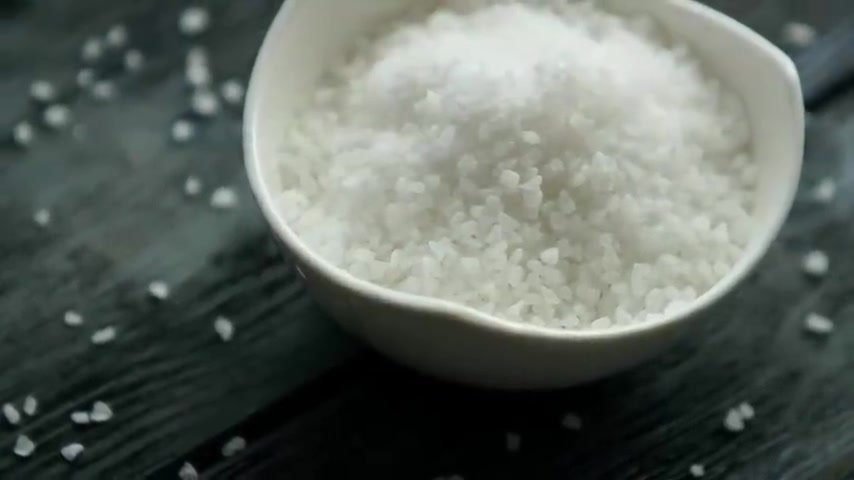Table of Contents
Are you an athlete or active individual concerned about losing potassium through sweat? While sodium loss is often the focus, potassium is equally important for maintaining electrolyte balance and optimal performance. This article explores how much potassium you lose during intense sweating, the importance of replenishing it, and the potential consequences of deficiency.
Potassium Needs and Depletion

I wanted to cover an important topic if you’re an athlete and it relates to how much potassium and sodium do you need when you’re actually sweating .
Now the problem is most people think of sodium loss when they’re sweating .
They don’t think of the potassium loss .
Table Summarizing
| Topic | Data/Information |
|---|---|
| Recommended Daily Potassium Intake | – General population: 4,700 mg – Non-exercising individuals: 2,500 mg – Athletes/active individuals: Up to 6,000 mg |
| Recommended Daily Sodium Intake | – General population: 2,300 mg (approx. 1 tsp) |
| Potassium Loss Through Sweating | – 150-500 mg lost per hour of intense sweating |
| Sodium Loss Through Sweating | – 500-2,000 mg lost per hour of intense sweating |
| Sweat Rate During Intense Exercise | – Up to 2 lbs (0.9 kg) per hour |
| Glycogen Depletion | – Causes additional potassium loss, as potassium is needed to store glucose as glycogen |
| Symptoms of Potassium Deficiency | – Cramps, bloating, fatigue, nausea, vomiting, weak muscles, muscle spasms, increased heart rate |
| Blood Test Limitations | – Only shows extracellular potassium levels (1.5% of total) – Intracellular deficiency (98.5%) may not be detected |
| Replenishing Potassium | – Consume potassium-rich foods – Consider supplementation – Time intake around exercise |
So this topic is for that person .
Normally we need about 47 100 milligrams of potassium every single day and you can get by with like 25 , 100 milligrams if you’re not exercising , but that’s not completing all the functions in the body .
You actually need at least 47 .
And if you’re exercising and you’re stressed or you have inflammation , you have other problems , especially rheumatoid arthritis , this number could probably go up to 6000 milligrams per day .
Now you need 23 100 milligrams of sodium per day .
That would come out to , I would say about a level teaspoon per day .
But that’s from someone that doesn’t exercise .
Let’s say for example you are working out really intensely outside where it’s hot in the summer and you’re playing tennis , you could lose up to 2 pounds of sweat .
Now for those people that are on the metric system , a little more advanced than us Americans , that’s 0.9 kilograms .
Almost 1 kilogram of sweat every single hour .
So if you’re a football player or you’re playing tennis or you’re in some boot camp or some type of physical activity , you could lose a tremendous amount of fluid .
Now how much sodium loss ?
Well , it’s very difficult to tell exactly how much , but it’s gonna be between 500 at the very minimum up to 2 , 000 milligrams of sodium loss every single hour .
That’s like the almost the entire , recommended daily amount of sodium .
Sweating, Electrolyte Balance and Performance

But with potassium , you lose a 150 to 500 milligrams of potassium through the sweat .
But that’s not all .
You also have something called glycogen .
Glycogen is stored glucose in your muscle and in your liver .
And any time you store glucose , you need potassium .
So 2 things .
Number 1 , you’re using up your glycogen and when you lose up your glycogen when you’re exercising , guess what ?
You’re losing your potassium too .
So that’s in addition to this amount .
Not to mention , if you’re a long distance runner , you might be taking glycogen or that goo every hour .
People have been known to take a 100 milligrams of that every single hour when they’re in a race .
When you’re taking glycogen without potassium , you’re depleting your potassium reserves even more because it takes potassium to store glucose as glycogen .
So that would subtract from this even more .
Now this is 1 of the reasons why a long distance runner could get cramps , bloating or fatigue because of the lost potassium even more than the sodium .

Because normally they’re taking salt , but they’re not considering sodium .
And here are a few more , symptoms of low potassium .
Nausea , vomiting , weak muscles , muscle spasm , and increased heart rate .
And lastly , when you get a blood test , realize that the great majority of potassium in your body like 98.5 percent is inside the cell .
It’s in the muscle . It’s not in the blood .
Assessing Potassium Status
So if you get a blood test , it’s very likely that an actual potassium deficiency inside your cells is gonna show positive by testing the blood .
key Points:
- How much potassium and sodium do you need when you’re sweating?
- You need about 4,700 mg of potassium every single day. If you’re exercising, you’re stressed, or you have inflammation, you may need up to 6,000 mg a day.
- You need 2,300 mg of sodium per day, which equals out to about a level teaspoon per day. But that’s for someone who doesn’t exercise.
- If you’re doing an intense workout outside when it’s hot, you could lose up to two pounds of sweat (.9 kg).
• You could lose 500-2000 mg of sodium per hour
• You could lose 150-500 mg of potassium per hour
Glycogen is stored glucose in your muscles and in your liver. When you exercise, you use up your glycogen. When you use up your glycogen, you’re also losing your potassium. This is one of the reasons why a long distance runner could get cramps, bloating, or fatigue. It’s because of the loss of potassium even more than the sodium.
Symptoms of low potassium:
• Nausea
• Vomiting
• Weak muscles
• Muscle spasm
• Increased heart rate
DATA:
Download My FREE guide: First Signs of a Nutrient Deficiency
https://pubmed.ncbi.nlm.nih.gov/1275840
FAQ:
Is potassium excreted in sweat?
Yes, potassium is excreted in sweat, although the amount is typically small compared to other electrolytes like sodium.
How much potassium do you lose with exercise?
The amount of potassium lost through sweat during exercise varies depending on factors like intensity, duration, and environmental temperature. Generally, moderate exercise results in minimal potassium loss, while intense exercise in hot conditions can lead to greater losses.
Do we lose electrolytes when we sweat?
Yes, we lose electrolytes, including potassium, sodium, and chloride, when we sweat. This is why it’s important to replenish electrolytes, especially during prolonged or intense physical activity.
How much potassium is lost?
The exact amount of potassium lost through sweat is difficult to quantify precisely, as it varies greatly. However, studies suggest that a liter of sweat can contain approximately 10-15 mmol of potassium.
Can low potassium cause sweating?
Low potassium (hypokalemia) itself doesn’t directly cause sweating. However, some symptoms of low potassium, like muscle cramps and fatigue, can indirectly lead to sweating during physical activity.
Does high potassium cause sweating?
High potassium (hyperkalemia) is generally not associated with sweating. In fact, high potassium levels can cause other symptoms like muscle weakness, fatigue, and heart rhythm abnormalities.
Symptoms of low potassium in females?
The symptoms of low potassium are generally the same for both men and women. Some common symptoms include:
- Muscle weakness and cramps
- Fatigue
- Constipation
- Heart palpitations
- Tingling and numbness
- Abnormal heart rhythms
- Lightheadedness or faintness
Low potassium symptoms?
Low potassium symptoms can range from mild to severe, depending on the severity of the deficiency.
Mild symptoms may include:
- Constipation
- Muscle weakness and spasms
- Fatigue
- Tingling and numbness
- Heart palpitations
More severe cases can lead to:
- Severe muscle weakness, leading to paralysis
- Low blood pressure (hypotension)
- Lightheadedness or faintness
- Abnormal heart rhythms (arrhythmias)
- Excessive urination (polyuria)
- Excessive thirst (polydipsia)
Approximately how much sodium is lost in 1 liter of sweat?
The amount of sodium lost in sweat can vary depending on factors like individual differences, exercise intensity, and environmental conditions. However, a general estimate is that 1 liter of sweat can contain approximately 1000-1500 mg of sodium.
How much potassium per day?
The recommended daily intake of potassium for adults is 4,700 mg.
What happens when considerable salt is lost in sweat?
When significant amounts of salt are lost through sweat, it can lead to dehydration and electrolyte imbalances. This can cause symptoms like muscle cramps, fatigue, dizziness, and nausea. In severe cases, it can lead to heat exhaustion or heat stroke.




